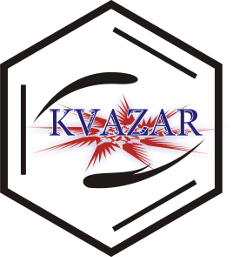This month, the journal Nanotechnology by IOP Publishing (Great Britain) published the results of research by the research team of the Chief Researcher of the Department of Mathematical Modeling, Doctor of Physical and Mathematical Sciences, Professor O.E. Glukhova (article Electronic properties and behavior of carbon network based on graphene and single-walled carbon nanotubes in strong electrical fields: quantum molecular dynamics study). The studies were aimed at revealing by in silico methods the regularities of the influence of strong electric fields with a strength of 1–20 V/nm on the atomic and electronic structure of covalently bonded graphene–nanotube compounds as part of branched carbon networks. Compounds based on a chiral nanotube (6,5) and graphene fragments covalently attached to it were considered. Similar numerous graphene–nanotube compounds forming a branched network are obtained as a result of laser nanowelding and represent emitting centers in strong electric fields. In the course of calculations performed in the framework of Born-Oppenheimer molecular dynamics based on the density functional theory in the tight-binding approximation with charge self-consistency (SCC DFTB) using the extended Lagrangian, it was found that partial destruction of the structure in the form of detachment of graphene fragments from the nanotube and local breaking of bonds between nanotube atoms begins at a field strength of 15 V/nm. At the same time, mechanical oscillations of the atomic framework were found, which consist in periodic compression/stretching of the nanotube diameter and, accordingly, stretching/compression of the structure framework along field lines. It has been established that at a strength of 4÷10 V/nm, the oscillation frequency is strictly periodic with a frequency of 1.2÷1.35 THz. With an increase in tension to 20 V/nm, the oscillation frequency decreases with subsequent destruction. This work opens up prospects for finding the relationship between the frequency of mechanical vibrations of graphene–nanotube structures and the nanotube diameter. The research was supported by the Russian Science Foundation grant No. 21-19-00226 (supervisor – Professor O.E. Glukhova).
Press releases with information about the results of scientific research have been issued by a number of leading Internet media in the Russian Federation, including the information portals Scientific Russia, InScience.News, NanoNewsNet.ru, Poisk, Kommersant Publishing House:
https://www.kommersant.ru/doc/5339810
https://poisknews.ru/nanotehnologii/uchenye-issledovali-svojstva-lezvijnyh-gibridov-iz-grafena-i-uglerodnoj-nanotrubki/
https://scientificrussia.ru/articles/ucenye-issledovali-svojstva-lezvijnyh-gibridov-iz-grafena-i-uglerodnoj-nanotrubki
https://www.nanonewsnet.ru/news/2022/uchenye-issledovali-svoistva-lezviinykh-gibridov-iz-grafena-uglerodnoi-nanotrubki
https://inscience.news/ru/article/russian-science/9525





